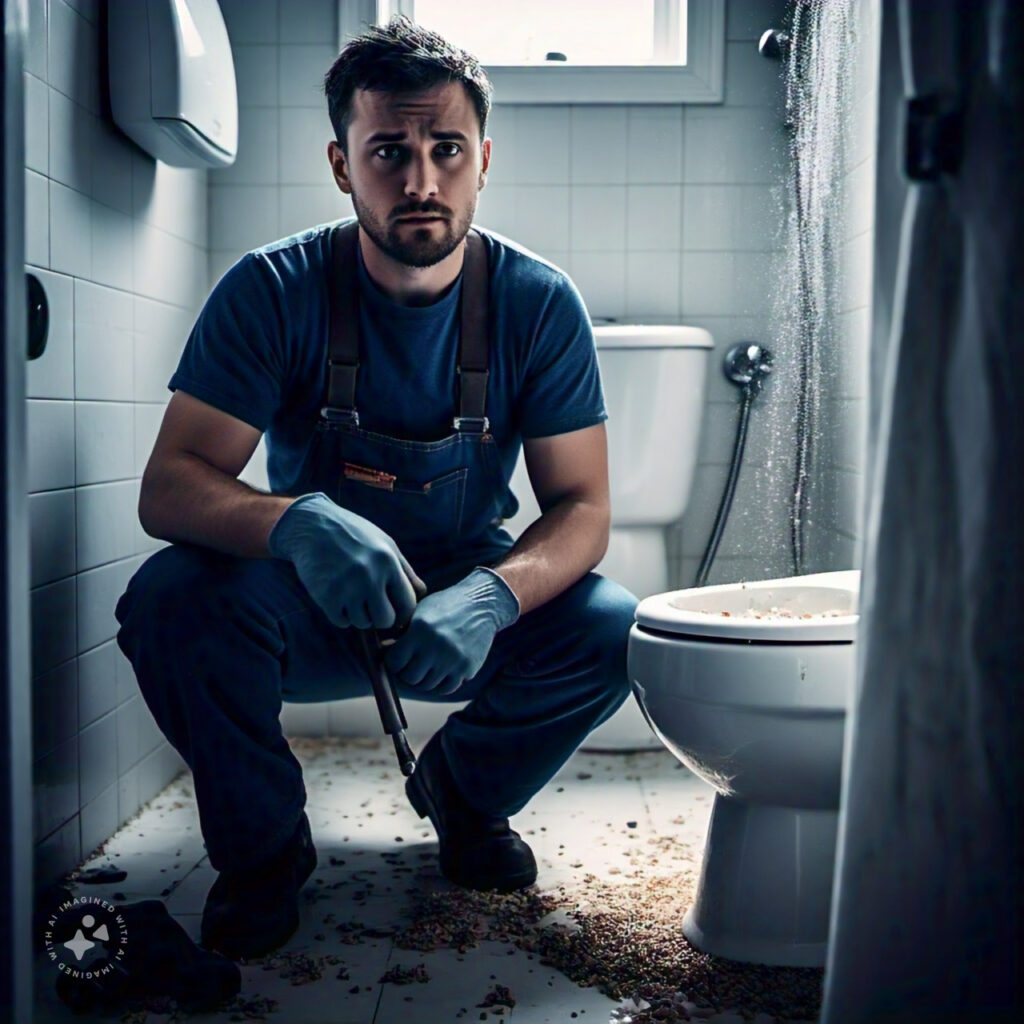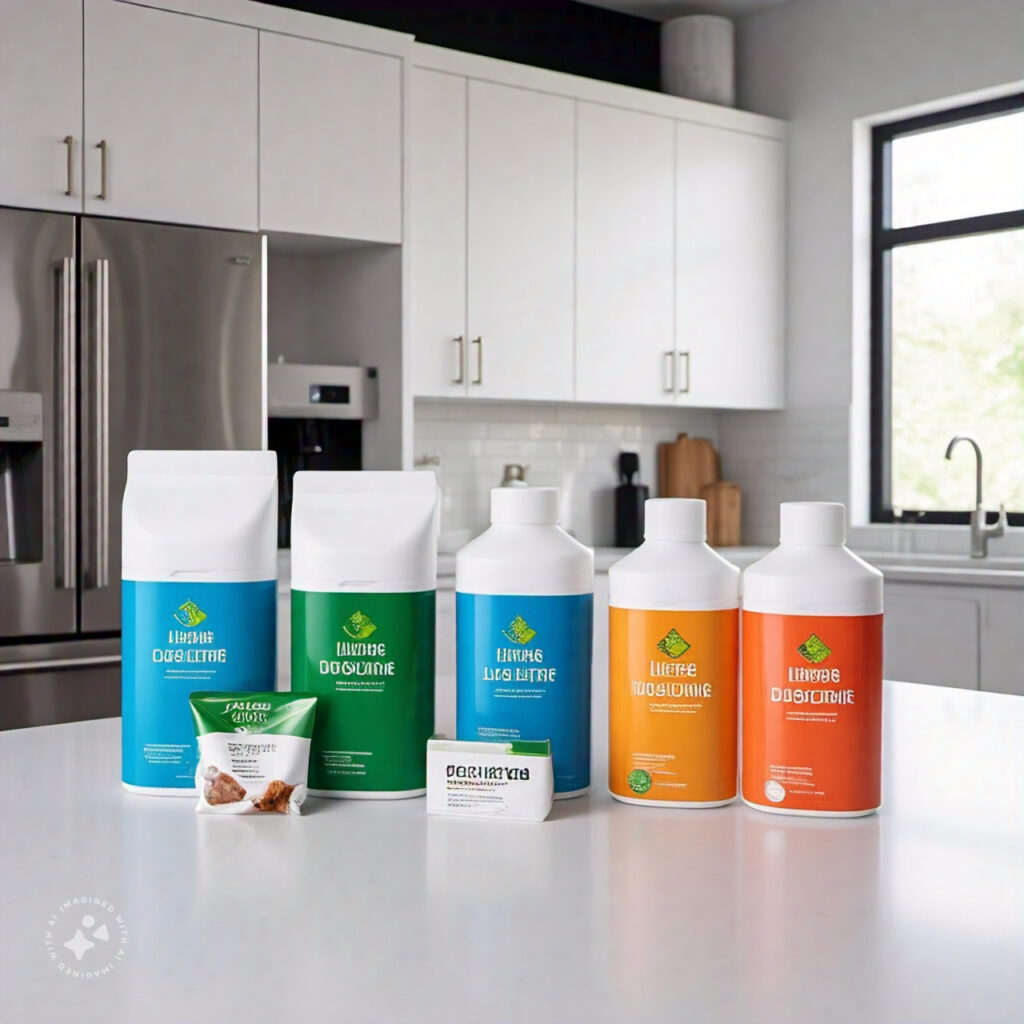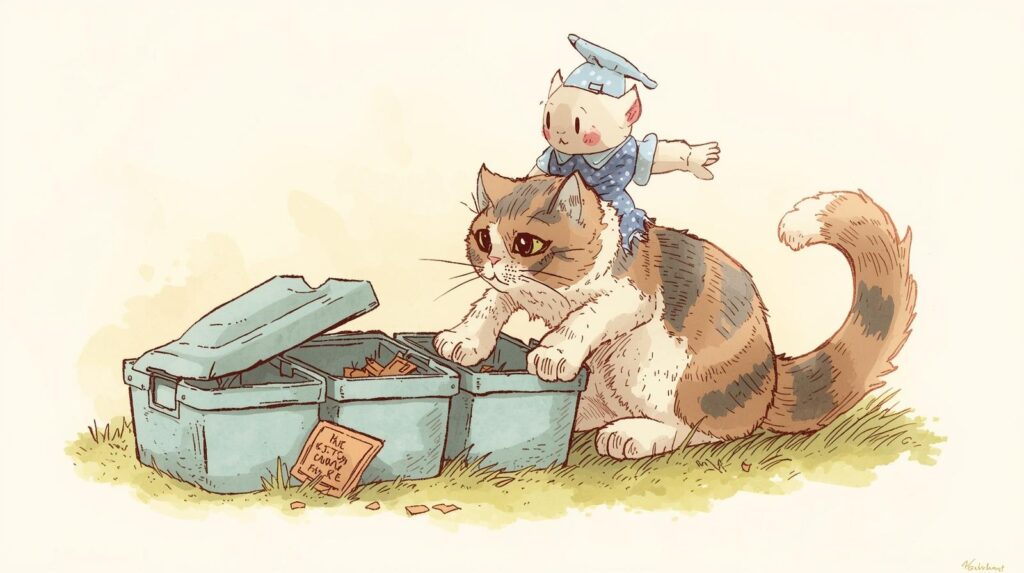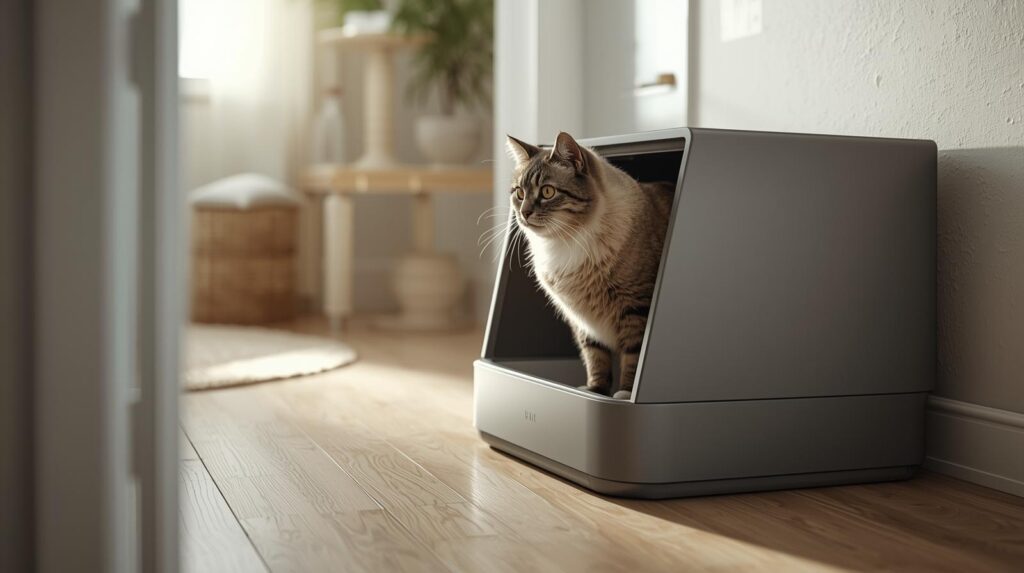Cat litter can cause severe drain blockages because it’s designed to absorb moisture and clump, making it difficult to dissolve.
The best way to address this issue is by using hot water combined with dish soap, an enzyme-based drain cleaner, or a baking soda and vinegar solution.
These methods can help break down the clumps and clear minor clogs, but if the blockage persists, it’s essential to call a plumber to prevent further damage to your plumbing system.
This comprehensive guide explores the causes of cat litter clogs, what can dissolve cat litter, prevention methods, and solutions for dealing with litter-related plumbing issues.

Table of Contents
Why Cat Litter in Drains is a Problem
Cat litter is designed to absorb moisture and clump together. While this property makes it effective for containing pet waste, it becomes a nightmare when it enters plumbing systems. Common problems include:
- Clogs and Blockages: Litter expands when wet, making it prone to forming solid masses that block pipes.
- Pipe Damage: Over time, hardened litter can cause cracks or other damage to your plumbing system.
- Expensive Repairs: Removing litter from pipes often requires professional intervention, which can be costly.
Cassava Cat Litter is one of the best biodegradable litter that you can use to prevent clogs in sewage system.
Types of Cat Litter and Their Impact on Drains
Not all cat litter is the same, and its type determines how it behaves in your drain.
- Clay-Based Litter:
- Made from bentonite clay.
- Absorbs moisture and forms hard clumps.
- Extremely difficult to dissolve.
- Silica Gel Litter:
- Composed of tiny beads.
- Absorbs moisture but doesn’t clump.
- Can cause blockages but may dissolve over time with certain solutions.
- Biodegradable Litter:
- Made from materials like wood, paper, or corn.
- More likely to break down, but still problematic in drains.
- Non-Clumping Litter:
- Absorbs moisture without forming clumps.
- Less harmful to pipes but still causes build-up over time.
What Dissolves Cat Litter in a Drain?
Here are the best methods for dissolving cat litter clogs:

1. Hot Water and Dish Soap
- How It Works: Hot water softens clumps, and dish soap breaks down oily residues.
- Steps:
- Boil water and pour it down the drain.
- Add a generous amount of dish soap.
- Let it sit for 15–20 minutes before flushing with more hot water.
2. Enzyme-Based Drain Cleaners
- How It Works: Enzymes break down organic material in biodegradable litter.
- Steps:
- Purchase a pet-safe enzyme drain cleaner.
- Pour the recommended amount into the drain.
- Wait several hours or overnight before rinsing with hot water.
Buy Now: Grease & Waste Digester Cleans Slow/Clogged Drains
3. Vinegar and Baking Soda
- How It Works: The chemical reaction helps dislodge debris and break down organic material.
- Steps:
- Pour ½ cup of baking soda into the drain.
- Add 1 cup of vinegar.
- Cover the drain and let it fizz for 30 minutes.
- Flush with hot water.
4. Plunging
- How It Works: Creates pressure to dislodge clogs.
- Steps:
- Place a plunger over the drain.
- Use firm, steady movements to create suction.
- Repeat until the clog is cleared.
Buy Now: Toilet Plunger and Bowl Brush Combo
5. Chemical Drain Cleaners
- How It Works: Harsh chemicals dissolve clumps of litter.
- Caution: Use only as a last resort as these chemicals can damage pipes.
- Steps:
- Follow the product instructions carefully.
- Ensure proper ventilation while using.
Buy Now: Liquid-Plumr Advanced Action Clog Destroyer
When to Call a Professional
If home remedies don’t work, or if the clog persists, it’s time to contact a plumber. Professionals can use tools like plumbing snakes or hydro-jetting to clear the pipes safely.
Preventing Cat Litter from Entering Drains
Preventative measures can save you time, money, and stress. Here’s how to stop litter from causing drain issues:
1. Use a Litter Mat
- Place a mat under the litter box to catch stray litter.
Buy Now: Cat Litter Mat Double Layer Waterproof Urine Proof
2. Dispose of Litter Properly
- Always scoop and dispose of litter in the trash, never in sinks or toilets.
3. Train Your Cat
- Keep the litter box far from drains or sinks.
4. Install Drain Covers
- Use drain screens to catch debris before it enters the pipes.
5. Choose the Right Litter
- Opt for biodegradable options that break down more easily.
Environmental Impact of Cat Litter in Drains
Improper disposal of cat litter doesn’t just harm your plumbing; it can negatively affect the environment:
- Water Pollution: Clay-based litter doesn’t dissolve and can contaminate water sources.
- Waste Management Issues: Non-biodegradable litter contributes to landfill problems.
Switching to eco-friendly options and disposing of litter responsibly helps reduce your environmental footprint.
Top Eco-Friendly Cat Litter Options
Here are some sustainable alternatives to traditional litter:
- Wood Pellets: Biodegradable and naturally absorbent.
- Recycled Paper: Lightweight and eco-friendly.
- Corn-Based Litter: Clumps naturally and decomposes easily.
- Coconut Husk: Absorbs moisture and is compostable.
Common Myths About Cat Litter and Drains
Myth 1: Flushing Cat Litter is Safe
- Reality: Most plumbing systems cannot handle cat litter, leading to clogs.
Myth 2: Hot Water Alone Can Dissolve Litter
- Reality: While hot water helps, it often needs to be paired with other solutions.
Myth 3: Biodegradable Litter Doesn’t Cause Clogs
- Reality: Even biodegradable litter can create problems if not disposed of properly.
Tips for Maintaining Your Plumbing System
- Regularly inspect and clean drains.
- Use enzyme cleaners monthly as a preventative measure.
- Avoid flushing or washing cat waste down the sink.
FAQs About Cat Litter in Drains
Can I flush cat litter down the toilet?
No, cat litter should never be flushed as it can cause severe clogs.
What is the fastest way to clear a litter clog?
Hot water and dish soap are usually the quickest method for clearing minor clogs.
Is it safe to use chemical drain cleaners?
Only as a last resort, as they can damage pipes and harm the environment.
Can biodegradable litter still cause plumbing issues?
Yes, even biodegradable litter can lead to clogs if not disposed of properly.
Conclusion
Cat litter in drains can cause serious plumbing problems, but with the right knowledge, you can prevent and resolve these issues effectively. From using hot water and vinegar solutions to opting for eco-friendly litter and practicing responsible disposal methods, there are plenty of ways to keep your pipes clear. Prevention is key to avoiding costly repairs and maintaining a healthy home.
By adopting better habits and considering the environmental impact, you can protect both your plumbing and the planet.


